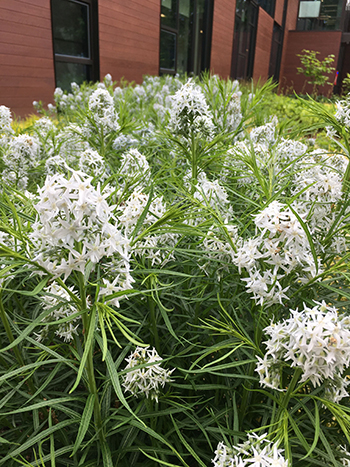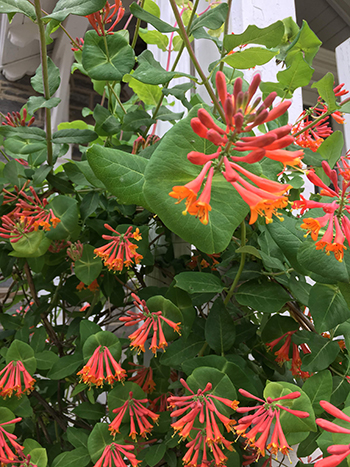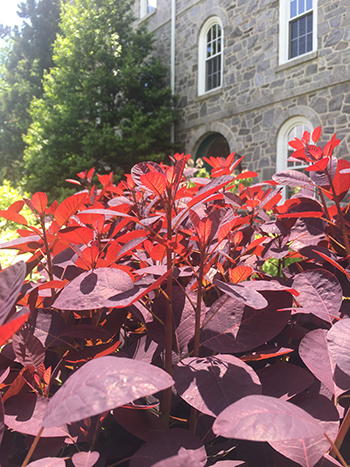
Plants of the Week: June 3
Guest Author: Rosemary Grogan, Summer Intern

Amsonia hubrichtii
Amsonia hubrichtii (Arkansas blue star) is a herbaceous perennial from the Apocynaceae, or dogbane family. While dogbane family is native to the South-central United States, Arkansas blue star is specifically native to the Ouachita Mountains in central Arkansas. In the 1940s, Leslie Hubricht had first discovered Amsonia hubrichtii growing in the wild in Arkansas, becoming the inspiration for the common name. A. hubrichtii attracts butterflies and is largely deer resistant. Arkansas blue star grows in well-drained soil in full sun to partial shade. The plant can grow 2 to 3 feet tall and wide.
From April to May, it produces light blue flowers that emerge in small clusters and resemble stars. The foliage transitions from a summer green to a golden fall display. A large patch of A. hubrichtii can be found near Whittier Hall in rows adjacent to hostas and ferns.
Photo Credit: R.Grogan

Lonicera x brownii ‘Dropmore Scarlet’
Lonicera x brownii is a semi-evergreen climbing vine from the Caprifoliaceae, or honeysuckle family. The Caprifoliaceae family includes various decorative vines and shrubs that are primarily from temperate climates. Plants within this genus are fragrant with tubular or two-lipped flowers. Lonicera x brownii ‘Dropmore Scarlet,’ commonly known as Brown’s honeysuckle, has striking trumpet-shaped scarlet flowers that bloom from mid-summer to late autumn. As the summer progresses, small red berries appear if temperatures are hot enough.
‘Dropmore Scarlet’ can grow anywhere from 8 to 12 feet tall and 6 feet wide. This vine thrives in partial shade with rich humus soil and proper drainage. ‘Dropmore Scarlet’ with its vibrantly colored foliage can be found at the entrance to the Swarthmore Friends Meetinghouse.
Photo Credit: R.Grogan

Cotinus coggygria ‘Royal Purple’
Cotinus coggygria is a deciduous shrub that is part of the Anacardiaceae, the cashew family. Commonly known as a smoketree, this shrub spans from southern Europe to central China. Bunches of yellow airy flowers appear in the spring. The common name originates from the billowy hair-like appenditures that appear in pink, feathery clusters during summer months. As the name suggests, this shrub presents a smokiness from those airy groups of flowers.
‘Royal Purple’ is a European species that gets its name from the deep maroon spring foliage that matures into deep purple summer foliage. It arrived in the U.S. from Boskop, Holland in 1953. The shrub can reach anywhere from 10 to 15 feet high and spread 15 to 20 feet wide. This plant prefers rocky and nonporous soils, thriving in full sun. Cotinus coggygria can be found adjacent to Parrish Hall facing the Dean Bond Rose Garden.
Photo Credit: R. Grogan





Karen Key
Posted at 07:08h, 11 JulyThank you for the information and beautiful photos. I love the Scott Arboretum!
Becky Robert
Posted at 08:13h, 11 JulyThank you for following our blog, Karen! The lilies are looking amazing around campus right now.
Sincerely,
Becky Robert
Scott Arboretum